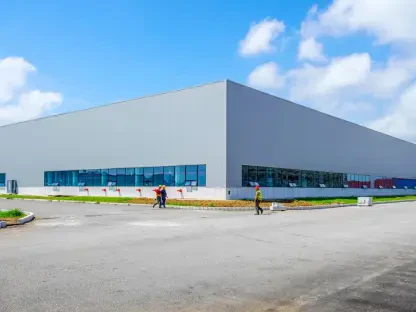The packaging industry stands at a critical juncture, grappling with the dual challenges of sustainable innovation and consumer demand for environmentally conscious solutions. As the industry shifts toward eco-friendly practices, companies are exploring recyclable, reusable, and biodegradable alternatives to traditional plastic packaging. These innovations not only promise to reduce waste but also align with global sustainability goals, setting the stage for a comprehensive review of the current advancements in eco-friendly packaging.
Breaking Down Eco-Friendly Packaging Technology
Eco-friendly packaging technology has undergone significant transformation, driven by increasing environmental awareness and regulatory pressures. The core principles of this technology focus on sustainability, minimizing ecological impact, and enhancing material lifecycle. Key components include the development of recyclable and biodegradable materials that offer viable substitutes for non-sustainable counterparts. The motivation behind this shift is clear—businesses aim to reduce their carbon footprint and answer the growing consumer call for sustainable products.
Recyclable and reusable materials have garnered particular attention with innovations like fiber-based solutions replacing plastic. Emphasizing material reusability, these alternatives are instrumental in minimizing landfill contributions, underscoring their environmental significance. Such materials extend the lifecycle of products, contribute to energy conservation, and play a vital role in achieving waste reduction targets within the industry.
Biodegradable packaging solutions further advance sustainability objectives by integrating materials that naturally decompose, reducing long-term environmental burden. Technical developments in this area have culminated in products designed to break down without harming ecosystems, thus embodying the ethos of sustainability. These innovations represent a strategic pivot away from single-use plastics, offering consumers an eco-friendlier choice without compromising on quality.
Innovations Shaping the Future of Packaging
Recent developments in eco-friendly packaging underscore significant strides in material and process innovation, addressing both operational efficiency and reduction in plastic use. A notable example is Armour Wrap ECO, which integrates 100% post-consumer recycled content into its design, aligning product lifecycles with sustainability principles. This innovation highlights a trend in repurposing waste into functional packaging materials, bolstering environmental responsibility.
The wrapX® system reflects a commitment to operational excellence through its innovative wrapping techniques designed to minimize plastic dependency. By optimizing packaging processes, companies are achieving not only reduced material consumption but also a streamlined supply chain. These advancements demonstrate the industry’s proactive stance in addressing environmental challenges while maintaining a competitive edge.
The deployment of eco-friendly solutions across diverse sectors is an encouraging sign of broader acceptance and application. Innovations like Loadhog’s Pallet Lid and Storopack’s AIRfiber illustrate practical, modular approaches to waste reduction. The Pallet Lid, with its integrated straps, exemplifies reusability in operational settings, significantly cutting down on single-use plastic wrap reliance. Storopack’s AIRfiber integrates paper-based air pillows with a biodegradable coating, offering seamless recycling alongside conventional paper products. These applications highlight effective waste management solutions, reinforcing the industry’s progress toward sustainable goals.
Challenges in the Path Forward
Despite notable achievements, eco-friendly packaging faces several challenges that hinder widespread adoption. Technical limitations, such as compatibility with existing infrastructure, often pose significant hurdles. Regulatory compliance also adds complexity as global standards continue to evolve, demanding adaptations in material and product design. Market challenges, including cost considerations and consumer readiness, still require comprehensive strategies to overcome these barriers.
Efforts to address these challenges involve not only technological advancements but also collaborative initiatives within the industry. By fostering partnerships and encouraging cross-sector engagement, the packaging industry aims to create solutions that work within regulatory frameworks while meeting market demands. These initiatives are critical in overcoming obstacles and ensuring seamless integration of sustainable practices.
Future Prospects for Sustainable Packaging
The trajectory of eco-friendly packaging points toward continued innovation and recovery of crucial resources. Industry experts anticipate breakthroughs in material science and process efficiency, heralding new possibilities for sustainability. Future innovations are expected to focus on holistic lifecycle approaches, embedding sustainability from design to disposal.
Emerging trends suggest that eco-friendly packaging will become the norm rather than the exception, driving widespread adoption across industries. Breakthrough technologies are likely to emerge, offering solutions adaptable to diverse environments and market dynamics. The industry’s commitment to environmental responsibility suggests a promising future where sustainability and functionality are inherently intertwined in packaging practices.
Final Verdict on Eco-Friendly Packaging Innovations
This review illustrates the substantial progress made by the packaging industry in pursuit of eco-friendly solutions and highlights areas for future focus. Innovations in recyclable, reusable, and biodegradable materials have set a new benchmark for sustainable practices, with companies actively aligning operations with environmental objectives. While challenges persist, the industry’s resolve to foster sustainable innovation reflects a transformative shift toward a more sustainable future. The next steps involve refining technologies, enhancing industry collaboration, and ensuring consumer readiness to fully realize the potential of eco-friendly packaging innovations.









